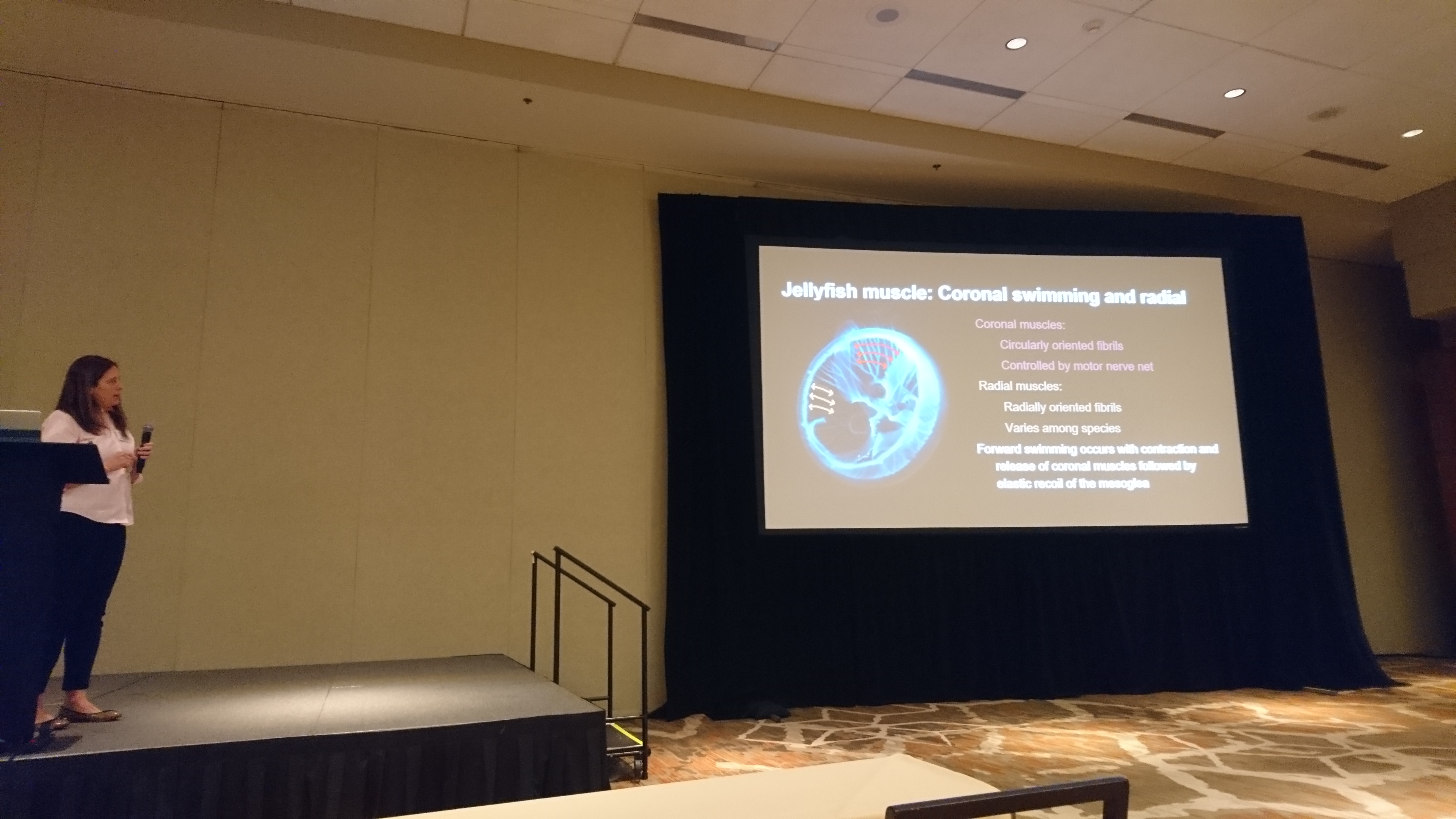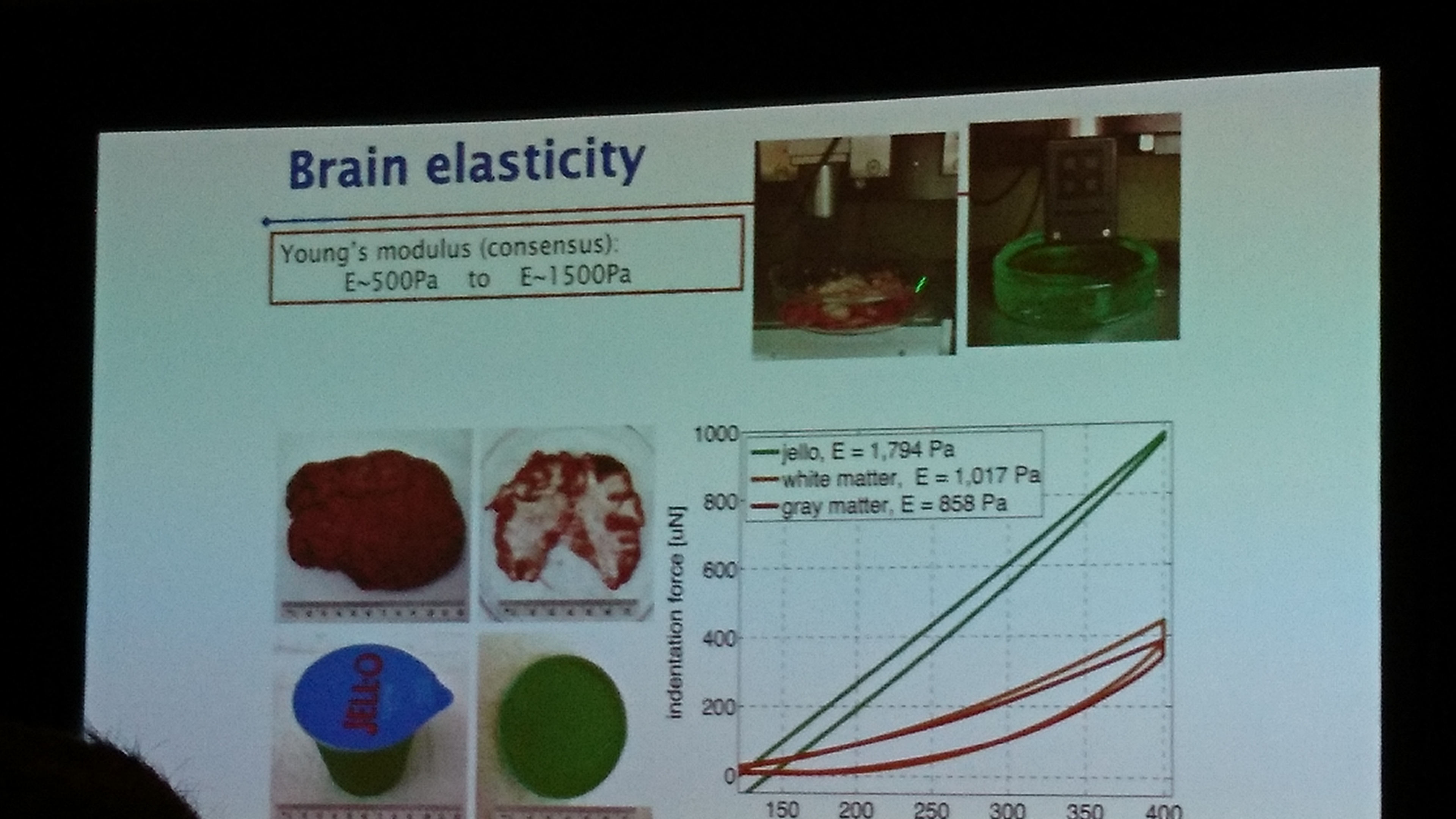Dynamics Days 2018 took place in Denver, Colorado. For three days, more than a 150 dynamicists presented and discussed trends and advances in the study of dynamical systems. The program showcased the rich diversity in both their theory and applications. Applications in geology, physics, biology, biomedicine, and several other disciplines were featured in the speaker program. Liz Bradley (University of Colorado Boulder) presented an approach to identifying extreme events in climate from the concentrations of hydrogen and oxygen isotopes in ice cores. Deformation and other physical and chemical effects require nonlinear modelling to map spatial isotope concentrations to a timeline of our planet’s climate. Jerome Daquin (RMIT University, Australia) showed results on long-term effects of solar and lunar perturbations on trajectories of satellites around Earth that he obtained using Fast Lyapunov Indicator maps. Laura Miller (University of North Carolina, Chapel Hill) explored the movement of jellyfish with the help of a model that couples fluid dynamics and neuromechanics. James Hudspeth (Rockefeller University) captivated his audience with details of the intricate design of the human ear and showed that dynamical models can help to understand how this design enables us to be more sensitive to weak sounds than to loud noises.
 Laura Miller (University of North Carolina, Chapel Hill) models the movement of jellyfish.
Laura Miller (University of North Carolina, Chapel Hill) models the movement of jellyfish.
For fans of dynamics on networks, like me, the highlights of the program included Peter Dodds (University of Vermont) presenting results on transient dynamics of Simon’s rich-gets-richer model, Cristopher Moore (Santa Fe Institute) showing that one can use an Ising model to identify detectability phase transitions for belief-propagation-based community detection in networks, and Hermann Riecke (Northwestern University) explaining how the right combination of inhibitory coupling, excitability, and uncorrelated noise can steer a network with community structure away from synchronization of individual communities and towards synchronization of the full network.
Dynamics Days 2018 also featured talks on perspectives on the interface of mathematical modelling with other scientific methods that were novel and intriguing to attendees from many different fields and backgrounds. In their talks, Chris Jones (University of North Carolina, Chapel Hill) and Nathan Kutz (University of Washington) discussed aspects of the relationship between mathematical modelling and data. Jones argued that mathematical modelling of dynamical systems can enhance the development of techniques for data assimilation. Kutz demonstrated that data analysis of time-series data can identify the equations and physical laws that govern a dynamical system.
In captivating talks, Doug Kelley (University of Rochester), William Irvine (University of Chicago), and Peko Hosoi (MIT) showcased that experimental studies can inspire and advance mathematical models of dynamical systems. Kelley’s group designed an experimental setup for investigating the Belousov–Zhabotinsky reaction in flowing media. Their experimental results indicate that there exists an optimal Lagrangian stretching of the medium that promotes the Belousov–Zhabotinsky reaction most strongly. In his talk, with the playful title ``spinning top-ogoly’’, Irvine presented a 2D ``meta-material’’ that his group has built by coupling gyroscopes in a lattice. One can induce solitary vibrations in this medium that travel only along the edge of the medium. Their theoretical work indicates that this effect requires dynamics with time-reversal symmetry, which only occur for specific lattice geometries of the meta-material. Hosoi identified the ``star of her talk’’ to be an experimental model for a hairy surface that enabled her group to demonstrate the power of simple hydrodynamic models to describe air and viscous entrainment on hairy surfaces that move in and out of liquids. Their results make it possible to explain the hair density in the fur of diving animals and on the tongues of nectar-drinking bats.
Two lively sessions of ignite talks gave young researchers an opportunity to advertise their contributions to the evening poster sessions. The poster sessions turned out to be a delightful spectacle. Many poster presenters found creative ways to enhance their posters to capture the attention of attendees. Ryan G. James (UC Davis) distributed handouts with compact supplementary information, Stephen Morris (University of Toronto) showed a 3D model of icicle ripples, and Takashi Nishikawa (Northwestern University) made an iPad part of his poster and handed out souvenir coasters.
For many, Dynamics Days 2018 was a great opportunity to start the year by reconvening with old friends or making new ones, and to spark or reignite their passion for dynamical systems. Cristopher Moore captured the sentiment in the conclusion of his talk (I am quoting loosely): ``At different times, trends in science lead some to believe that everything is an economy, that everything is an ecology, or that everything is a network. But of course we know that, actually, everything is a dynamical system.’’

Alain Goriely (University of Oxford) compares the elasticity of the human brain and Jello.